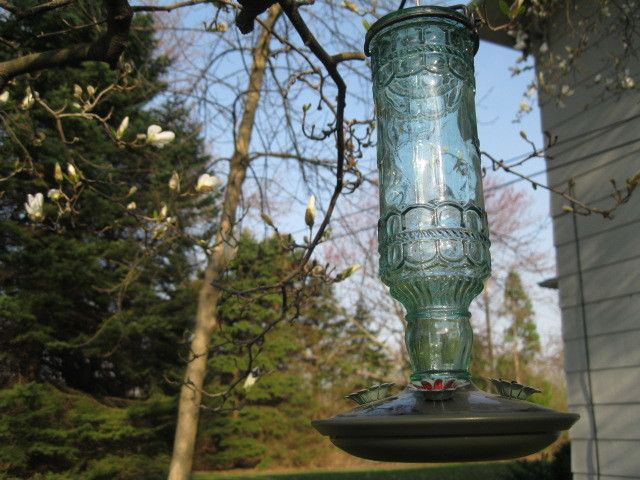Attract Hummingbirds with plants and homemade nectar
Summary: You can attract hummingbirds to your yard and garden with plants and homemade nectar. Fun to watch, hummingbirds are also pollinators and can benefit your landscape.
Hummingbirds, although small can travel thousands of miles during their annual migrations. There are 328 known species of hummingbirds and they are all native to the Americas. Hummingbirds rely on nectar, pollen and insects for nourishment.
Fascinating creatures, hummingbirds use their long bills to drink from flowers or feeders. They eat small insects for protein and are also pollinators. Some plants rely on the hummingbird to transfer pollen from their bills and wings while feeding to allow reproduction.
Hummingbirds are experiencing a loss of habitat due to human development, deforestation and many species are considered to be endangered or threatened.
Hummingbirds can hover and fly backwards. Their wings beat a nearly incomprehensible 60-80 times per second. Their little hearts can beat up to 1260 times a minute.
16 different species of hummingbirds breed in the United States but only the Ruby-throated hummingbird breeds east of the Mississippi River. Weighing in at only three grams, the Ruby-throated hummingbird will nearly double in weight to prepare for migration.
Hummingbirds have the highest metabolism rate of any animal on earth. They have a high breathing rate, a high heart rate, and a high body temperature. To maintain all of this and to provide energy for flying they may consume anywhere from 2/3 to 3 times their body weight in food each day.
Hummingbirds have the ability to enter a hibernation-like state called torpor. This allows the birds to conserve energy when the temperature is cold or food is scarce. Hummingbirds will even stop breathing for a time in order to conserve energy.
You can attract hummingbirds to your own yard and garden when you grow nectar-rich flowering plants, bushes and trees. Hummingbirds typically like tubular shaped flowers and are partial to those red in color.
Hummingbirds enjoy Bee Balm, Hollyhock, Rose of Sharon, Columbine among other varieties of flowering plants. Although hummingbirds are highly attracted to the color red, they also enjoy nectar-rich plants in a variety of other colors.
Supplementing hummingbirds diet with homemade nectar is an excellent way to keep the tiny creatures well-fed throughout the spring and summer. Homemade nectar is essentially sugar water. Feeders specific to hummingbirds are generally inexpensive. Consider the ease of cleaning the feeder when you purchase one.
To make homemade nectar:
1. Mix 1 part sugar with 4 parts water and bring to a boil to kill any bacteria or mold present.
2. Cool and fill feeder.
3. Extra sugar water may be stored in a refrigerator.
The Smithsonian Migratory Bird Center recommends no red dye be added to the nectar. Hummingbird feeders tend to have red on them and this is enough to attract the birds that have no sense of smell.
It is very important to keep hummingbird feeders clean. Empty and refill the feeders twice a week in warm weather. Clean the feeder with hot water between fillings. Hummingbirds and their babies are susceptible to mold and bacteria that can be attributed to dirty feeders.
It is worth the effort to provide a habitat and supplemental feeders for hummingbirds. They are lovely and fascinating to watch. Listen closely and you will discover how they got their name.

